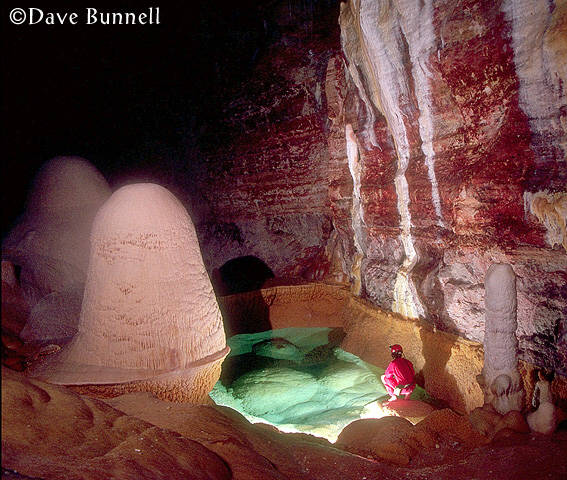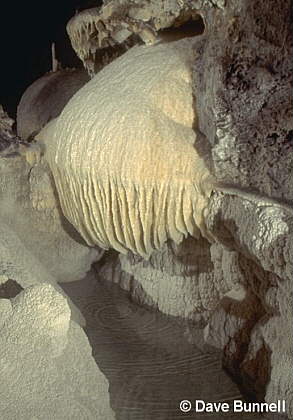
|
Baldacchino canopies form where the surface of a cave pool has receded beneath a growing stalagmite
or flowstone mound. Prior to lowering of the pool, pool spar
is deposited on the underside of the flowstone. Under these conditions, pool spar tends to grow most rapidly close
to the water surface, where diffusion of the incoming supersaturated solution within the pool is least and diffusion
of carbon dioxide into the overlying air is greatest. The result is an overhanging belly of calcite, which has its
widest girth at the pool surface. Such a belly can be seen at left in the upper photo, where the flanking pool of
blue, calcite-rich water has receded, but only after the overlying stalagmite has ceased growing.
The classic "canopy", however, is formed when seep water calcite envelopes the overhung spar following a drop in pool level. Rivulets of water that cascade along the overhanging surface then deposit fluted draperies. In the lower photo, we see that these draperies formed strictly below the level an old, stable pool surface, which is marked by a rim of shelfstone to the right of the canopy. Perhaps the world's most oft-visited Baldacchino canopy is the elegant pagoda known as "Dripping Springs", one of the few active (growing) formations in the Big Room of Carlsbad Caverns, New Mexico. You'll have to see that one on a real cave trip. |
![]()


![]()
| Back to: | |
 |
Created: June 19, 1995 Last Updated: January 16, 1996 Author: Djuna Bewley |